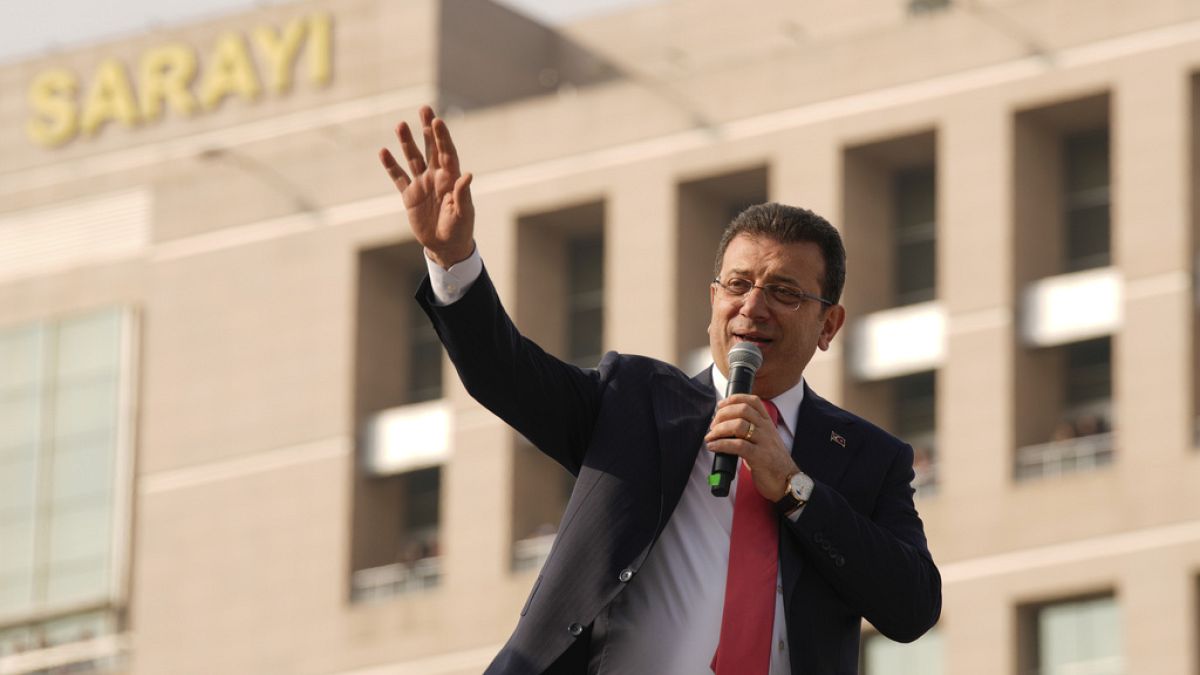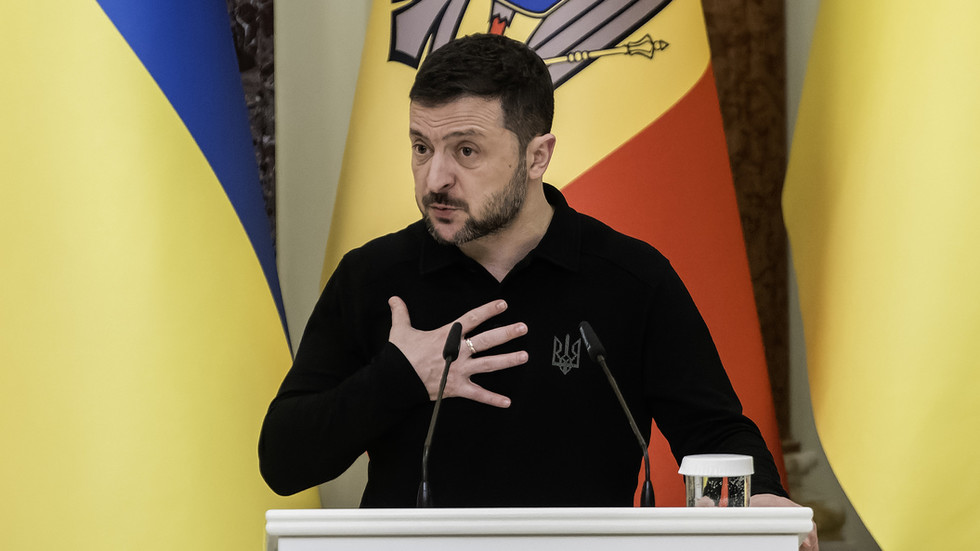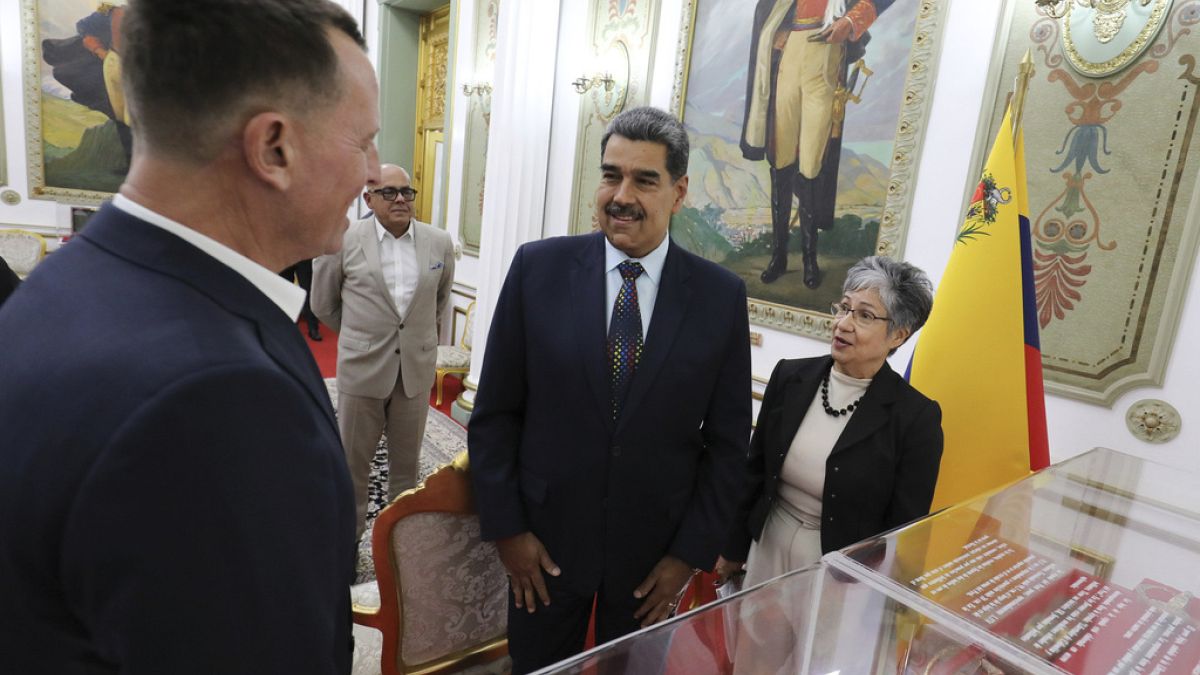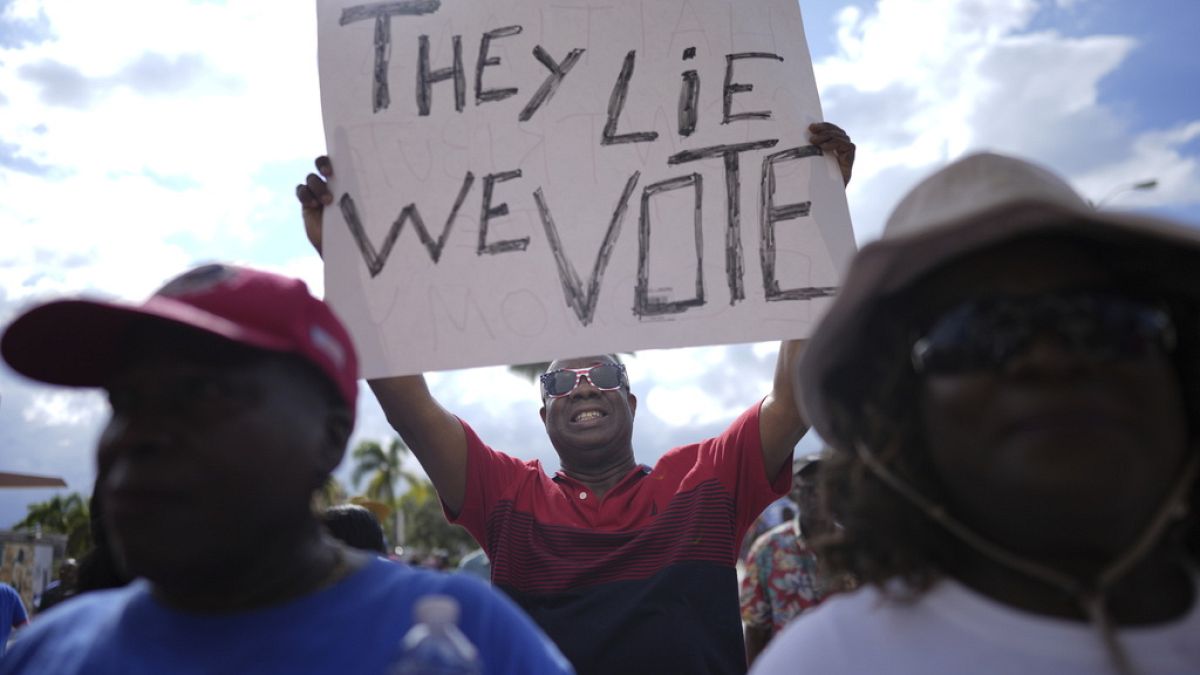The militants released Yarden Bibas, 35, and French-Israeli Ofer Kalderon, 54, in an orderly handover to the Red Cross in the southern Gaza Strip.
Hamas handed two hostages over to the Red Cross in Khan Younis on Saturday, while Palestinian authorities say Israel has agreed to release dozens of prisoners. It is the fourth round of exchanges during the Gaza ceasefire deal between Israel and Hamas.
The truce, which began on Jan. 19, is aimed at winding down the deadliest and most destructive war ever fought between Israel and the Hamas militant group.
The fragile deal has held for nearly two weeks, halting the fighting and allowing for increased aid to flow into the tiny coastal territory.
The militants released Yarden Bibas, 35, and French-Israeli Ofer Kalderon, 54, in an orderly handover to the Red Cross. Both had been abducted during the Hamas-led attack on Israel on Oct. 7, 2023, that sparked the war.
Another hostage, American-Israeli Keith Siegel, 65, was also set to be released on Saturday and was expected to be handed over to the Red Cross in Gaza City to the north.
A total of 33 Israeli hostages are expected to be freed in exchange for nearly 2,000 Palestinian prisoners during the truce’s initial six weeks. Israel says it has received information from Hamas that eight of those hostages were either killed in Hamas’ Oct. 7, 2023, attack or have died in captivity
Also on Saturday, wounded Palestinians are expected to be allowed to leave Gaza for Egypt through the Rafah crossing. It had been the only exit point for Palestinians during the war before Israel closed it in May. A European Union civilian mission was deployed Friday to prepare for the reopening of the crossing.
The reopening would mark another key step in the first phase of the ceasefire, which calls for the release of 33 hostages and nearly 2,000 prisoners, the return of Palestinians to northern Gaza and an increase in humanitarian aid to the devastated territory.
The imminent release of Bibas has brought renewed attention to — and concern for — the fate of his wife, Shiri, and their two young sons. All four were captured from Kibbutz Nir Oz.
A video of their abduction by armed men showed Shiri swaddling in a blanket her two redheaded boys — Ariel, 4, and Kfir, 9 months old at the time.
Kfir was the youngest of about 250 people taken captive on Oct. 7, and his plight quickly came to represent the helplessness and anger the hostage-taking stirred in Israel, where the Bibas family has become a household name.
Hamas has said Shiri and her sons were killed in an Israeli airstrike. Israel has not confirmed that, but a military spokesman recently acknowledged serious concern about their fates.
Yarden Bibas is believed to have been held separately from his family. Photos taken during his abduction appeared to show him wounded.
Like Bibas, Kalderon was also captured from Kibbutz Nir Oz. His two children and ex-wife, Hadas, were also taken, but they were freed during the 2023 ceasefire.
Keith Siegel, originally from Chapel Hill, North Carolina, was taken hostage from Kibbutz Kfar Aza, along with his wife, Aviva Siegel. She was released during the 2023 ceasefire and has waged a high-profile campaign to free Siegel and other hostages.
The dozens of Palestinian prisoners to be released by Israel on Saturday include people serving lengthy and life sentences.
More than 100 hostages were released during a weeklong ceasefire in Nov. 2023. About 80 more hostages are still in Gaza, at least a third of them believed dead. Israel says Hamas has confirmed that eight of the 33 to be released in the first phase of the ceasefire are dead.
Israel and Hamas are set next week to begin negotiating a second phase of the ceasefire, which calls for releasing the remaining hostages and extending the truce indefinitely. The war could resume in early March if an agreement is not reached.
Israel says it is still committed to destroying Hamas, even after the militant group reasserted its rule over Gaza within hours of the latest ceasefire. A key far-right partner in Netanyahu’s coalition is calling for the war to resume after the ceasefire’s first phase.
Hamas says it won’t release the remaining hostages without an end to the war and a full Israeli withdrawal from Gaza.
In the Oct. 7 attack that started the war, some 1,200 people, mostly civilians, were killed. More than 47,000 Palestinians have been killed in Israel’s retaliatory air and ground war, over half of them women and children, according to Gaza’s Health Ministry, which does not say how many of the dead were militants.
The Israeli military says it killed over 17,000 fighters, without providing evidence. It blames civilian deaths on Hamas because its fighters operate in residential neighbourhoods.

 4 hours ago
1
4 hours ago
1






 We deliver critical software at unparalleled value and speed to help your business thrive
We deliver critical software at unparalleled value and speed to help your business thrive






 English (US) ·
English (US) ·